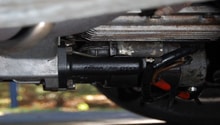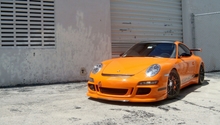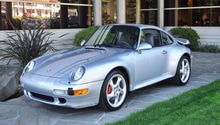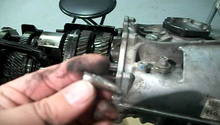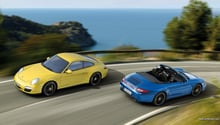Porsche 997: How to Not Ruin Your Clutch
As with any system in the Porsche 997, there's a right way and a wrong way to treat it. Play nice with your clutch, and it can provide years of trouble-free use.
This article applies to the Porsche 997 (2005-2012).
The manual transmission is largely being phased out of use in cars today, with top-end sports cars like the 991 GT3 being offered with paddle shift only. For the die-hards who still prefer the driving experience from rowing their own gears, there are certain concerns that differ from those on automatic cars. For instance, three-pedal car owners never have to worry about valve bodies and shift solenoids failing. However, they do need to keep an eye on the functionality and wear of the clutch.
Clutch life in Porsche 997s can vary immensely from owner to owner. The question of premature parts wear has been raised to explain the few that need replacement with only a few thousand miles of use, but there has been no real proof of any such issue coming straight from the factory. Generally, the single most important factor for not ruining your clutch is the way you treat it while driving. A little care and finesse can go a long way. Learn how to look after and properly maintain your 997 clutch in the steps outlined below.

Step 1 – Understand how the clutch works
Before trying to change your clutch pedal habits, it's a good idea to understand how a clutch works and why you should treat it in a certain way. Keep in mind, the clutch lives between the engine and transmission. Replacing parts is a long, labor-intensive process that will either take up a lot of your time as a DIYer, or take up a good deal of money at a mechanic.
The clutch is comprised of three major parts that work together to transfer engine rotation into the rest of the drivetrain:
The Flywheel is a machined metal plate that is bolted to the crankshaft and spins with the engine.
The Pressure Plate is a second machined metal surface that is bolted to the flywheel and has "finger style" springs that push onto the...
Clutch Disc. This is sandwiched between the other two, and is the only part that is attached to the transmission input shaft. That means, whenever this part is spinning with the engine, the transmission is also spinning and the car is moving.
When you aren't touching the clutch, the pressure plate springs clamp down on the clutch disk, causing it to mate with the two machined surfaces. All three units spin as one, and engine rotation is transferred down the line. When you push the clutch pedal, you compress the springs and the clamping force is released from the pressure plate, creating a gap between the clutch disc and the machined surfaces. This allows the engine to spin without transferring any motion into the transmission. If you push the clutch partially (called "slipping the clutch"), the clutch disc is clamped onto but with less force, allowing it to slip and match the engine speed more slowly. This is how you get a manual transmission car moving from a stop.
The clutch disc is made from a friction material similar to brake pads and, just like pads, it wears out over time. The less time spent slipping the clutch and the less heat created through friction, the longer the material will last. Keep in mind, as soon as it's engaged fully (i.e. no slip), no more wear is taking place.

Step 2 – Adjust your driving
Since we now know what exactly is taking place inside the clutch, we can adjust our driving habits to maximize its life. The enemies here are heat and friction, so minimizing both is the goal. A properly used clutch can last well over 100,000 miles.
Most wear occurs when starting from a stop. The best way to take off is to keep the RPMs as low as possible and reduce the duration of clutch slip. If you need to take off quickly, you will have to increase RPMs and throttle pressure and let the clutch out faster, so do this as infrequently as possible. Keep in mind that this is a 911, not a muscle car burnout machine. The extra rear weight and wide rear tires means there is a massive amount of grip. If the tires refuse to slip, something else has got to give, and it will be the clutch. So be gentle on starts, and let the 997 shine where it's supposed to: in the corners.

Step 3 – Maintain the system
One more way to ensure you are being nice to your clutch is to make sure the fluid is always fresh. Moisture from the air and dust from the clutch disk can contaminate the fluid, which can damage seals and lead to a drop in line pressure. Not enough pressure can cause clutch slippage, racking up the repair bill even more.
997.1s and 997.2s have different procedures for flushing the clutch fluid, so make sure you research the process on Rennlist before taking it on. It's very easy on either car and can be done by a beginner DIYer in under 30 minutes. Refer to the Related Discussion links below for more information.
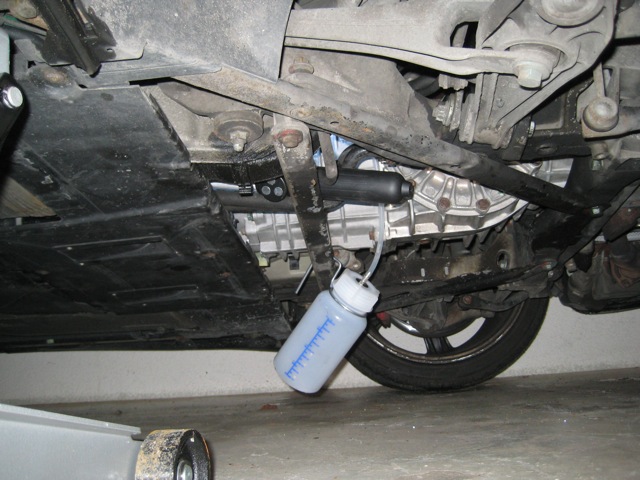
Related Discussions
- 997 Clutch Replacement? - Rennlist.com
- Replacing the Clutch: How I Did It - Rennlist.com
- How Do You Flush the Clutch Fluid in a 997.2S? - Rennlist.com
- 997 Short Clutch Life? - Rennlist.com
- 997.1 Clutch and Brake Fluid DIY - Rennlist.com

